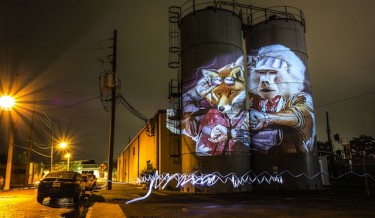Related post
Shape in Scapes – Transporting architecture into audio-video performance
Mar 07, 2017
|
Comments Off on Shape in Scapes – Transporting architecture into audio-video performance
3315
Hybrid Human-Animals Become Digital Street Art in Orlando
Feb 05, 2016
|
Comments Off on Hybrid Human-Animals Become Digital Street Art in Orlando
2780







